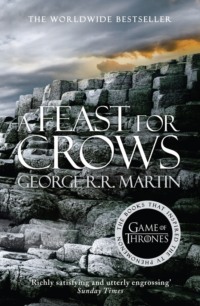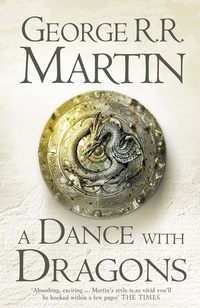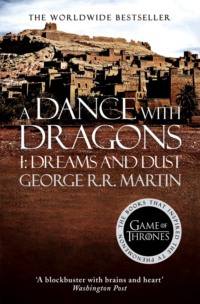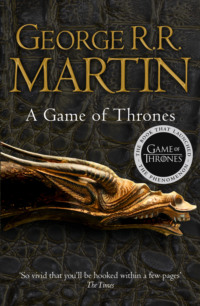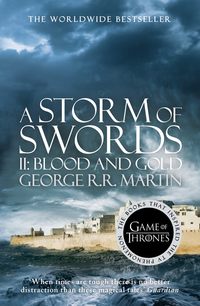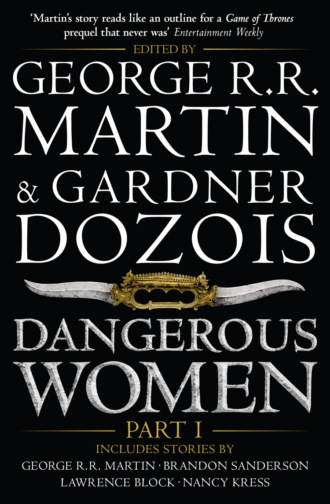
Полная версия
Dangerous Women

Dangerous Women
PART I
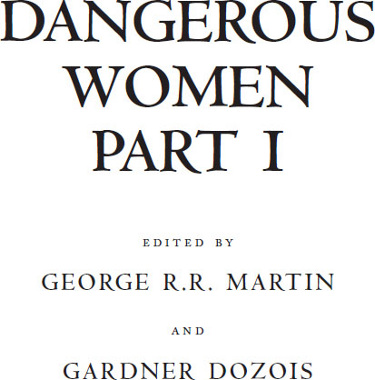

Copyright
HarperVoyager
An imprint of HarperCollinsPublishers Ltd
77–85 Fulham Palace Road,
Hammersmith, London W6 8JB
www.harpercollins.co.uk
First published in Great Britain by HarperVoyager 2013
Copyright © George R.R. Martin and Gardner Dozois 2013
Dangerous Women / Edited by George R.R. Martin and Gardner Dozois
Jacket layout design © HarperCollinsPublishers Ltd 2014
Jacket photograph © Royal Armouries
The author of each individual story asserts their moral rights, including the right to be identified as the author of their work.
A catalogue copy of this book is available from the British Library.
This novel is entirely a work of fiction. The names, characters and incidents portrayed in it are the work of the author’s imagination. Any resemblance to actual persons, living or dead, events or localities is entirely coincidental.
All rights reserved under International and Pan-American Copyright Conventions. By payment of the required fees, you have been granted the non-exclusive, non-transferable right to access and read the text of this e-book on-screen. No part of this text may be reproduced, transmitted, down-loaded, decompiled, reverse engineered, or stored in or introduced into any information storage and retrieval system, in any form or by any means, whether electronic or mechanical, now known or hereinafter invented, without the express written permission of HarperCollins.
Source ISBN: 9780007549429
Ebook Edition © September 2014 ISBN: 9780008104948
Version: 2014-08-20
Copyright Acknowledgments
“The Princess and the Queen ” copyright © 2013 by George R. R. Martin
“Raisa Stepanova” copyright © 2013 by Carrie Vaughn
“Second Arabesque, Very Slowly” copyright © 2013 by Nancy Kress
“I Know How to Pick ’Em” copyright © 2013 by Lawrence Block
“My Heart Is Either Broken” copyright © 2013 by Megan Abbott
“Wrestling Jesus” copyright © 2013 by Joe R. Lansdale
“Shadows for Silence in the Forests of Hell” copyright © 2013 by Brandon Sanderson
Dedication
To Jo Playford, my dangerous minion.
George R.R. MartinIntroduction by Gardner Dozois
Genre fiction has always been divided over the question of just how dangerous women are.
In the real world, of course, the question has long been settled. Even if the Amazons are mythological (and almost certainly wouldn’t have cut their right breasts off to make it easier to draw a bow if they weren’t), their legend was inspired by memory of the ferocious warrior women of the Scythians, who were very much not mythological. Gladiatrix, women gladiators, fought other women – and sometimes men – to the death in the arenas of Ancient Rome. There were female pirates like Anne Bonny and Mary Read, and even female samurai. Women served as frontline combat troops, feared for their ferocity, in the Russian army during World War II, and serve so in Israel today. Until 2013, women in the U.S. forces were technically restricted to “noncombat” roles, but many brave women gave their lives in Iraq and Afghanistan anyway, since bullets and land mines have never cared whether you’re a noncombatant or not. Women who served as Women Airforce Service Pilots for the United States during World War II were also limited to noncombat roles (where many of them were nevertheless killed in the performance of their duties), but Russian women took to the skies as fighter pilots, and sometimes became aces. A Russian female sniper during World War II was credited with more than fifty kills. Queen Boudicca of the Iceni tribe led one of the most fearsome revolts ever against Roman authority, one that was almost successful in driving the Roman invaders from Britain, and a young French peasant girl inspired and led the troops against the enemy so successfully that she became famous forever afterwards as Joan of Arc.
On the dark side, there have been female “highwaymen” like Mary Frith and Lady Katherine Ferrers and Pearl Hart (the last person to ever rob a stagecoach); notorious poisoners like Agrippina and Catherine de Medici, modern female outlaws like Ma Barker and Bonnie Parker, even female serial killers like Aileen Wuornos. Elizabeth Báthory was said to have bathed in the blood of virgins, and even though that has been called into question, there is no doubt that she tortured and killed dozens, perhaps hundreds, of children during her life. Queen Mary I of England had hundreds of Protestants burnt at the stake; Queen Elizabeth of England later responded by executing large numbers of Catholics. Mad Queen Ranavalona of Madagascar had so many people put to death that she wiped out one-third of the entire population of Madagascar during her reign; she would even have you executed if you appeared in her dreams.
Popular fiction, though, has always had a schizophrenic view of the dangerousness of women. In the science fiction of the 1930s, ’40s, and ’50s, women, if they appeared at all, were largely regulated to the role of the scientist’s beautiful daughter, who might scream during the fight scenes but otherwise had little to do except hang adoringly on the arm of the hero afterwards. Legions of women swooned helplessly while waiting to be rescued by the intrepid jut-jawed hero from everything from dragons to the bug-eyed monsters who were always carrying them off for improbable purposes either dietary or romantic on the covers of pulp SF magazines. Hopelessly struggling women were tied to railroad tracks, with nothing to do but squeak in protest and hope that the Good Guy arrived in time to save them.
And yet, at the same time, warrior women like Edgar Rice Burroughs’s Dejah Thoris and Thuvia, Maid of Mars, were every bit as good with the blade and every bit as deadly in battle as John Carter and their other male comrades, female adventuresses like C. L. Moore’s Jirel of Joiry swashbuckled their way through the pages of Weird Tales magazine (and blazed a trail for later female swashbucklers like Joanna Russ’s Alyx); James H. Schmitz sent Agents of Vega like Granny Wannatel and fearless teenagers like Telzey Amberdon and Trigger Argee out to battle the sinister menaces and monsters of the spaceways; and Robert A. Heinlein’s dangerous women were capable of being the captain of a spaceship or killing enemies in hand-to-hand combat. Arthur Conan Doyle’s sly, shady Irene Adler was one of the only people ever to outwit his Sherlock Holmes, and probably one of the inspirations for the legions of tricky, dangerous, seductive, and treacherous “femmes fatale” who featured in the works of Dashiell Hammett and James M. Cain and later went on to appear in dozens of films noir, and who still turn up in the movies and on television to this day. Later television heroines such as Buffy the Vampire Slayer and Xena, Warrior Princess, firmly established women as being formidable and deadly enough to battle hordes of fearsome supernatural menaces, and helped to inspire the whole subgenre of paranormal romance, which is sometimes unofficially known as the “kick-ass heroine” genre.
Like our anthology Warriors, Dangerous Women was conceived of as a cross-genre anthology, one that would mingle every kind of fiction, so we asked writers from every genre – science fiction, fantasy, mystery, historical, horror, paranormal romance, men and women alike – to tackle the theme of “dangerous women,” and that call was answered by some of the best writers in the business, including both new writers and giants of their fields like Diana Gabaldon, Jim Butcher, Sharon Kay Penman, Joe Abercrombie, Carrie Vaughn, Joe R. Lansdale, Lawrence Block, Cecelia Holland, Brandon Sanderson, Sherilynn Kenyon, S. M. Stirling, Nancy Kress, and George R.R. Martin.
Here you’ll find no hapless victims who stand by whimpering in dread while the male hero fights the monster or clashes swords with the villain, and if you want to tie these women to the railroad tracks, you’ll find you have a real fight on your hands. Instead, you will find sword-wielding women warriors; intrepid women fighter pilots and far-ranging spacewomen; deadly female serial killers; formidable female superheroes; sly and seductive femmes fatale; female wizards; hard-living bad girls; female bandits and rebels; embattled survivors in postapocalyptic futures; female private investigators; stern female hanging judges; haughty queens who rule nations and whose jealousies and ambitions send thousands to grisly deaths; daring dragonriders; and many more.
Enjoy!
George R.R. Martin
Hugo, Nebula, and World Fantasy Award – winner George R.R. Martin, New York Times bestselling author of the landmark A Song of Ice and Fire fantasy series, has been called “the American Tolkien.”
Born in Bayonne, New Jersey, George R.R. Martin made his first sale in 1971, and soon established himself as one of the most popular SF writers of the seventies. He quickly became a mainstay of the Ben Bova Analog with stories such as “With Morning Comes Mistfall,” “And Seven Times Never Kill Man,” “The Second Kind of Loneliness,” “The Storms of Windhaven” (in collaboration with Lisa Tuttle, and later expanded by them into the novel Windhaven), “Override,” and others, although he also sold to Amazing, Fantastic, Galaxy, Orbit, and other markets. One of his Analog stories, the striking novella “A Song for Lya,” won him his first Hugo Award, in 1974.
By the end of the seventies he had reached the height of his influence as a science fiction writer, and was producing his best work in that category with stories such as the famous “Sandkings,” his best-known story, which won both the Nebula and the Hugo in 1980 (he’d later win another Nebula in 1985 for his story “Portraits of His Children”); “The Way of Cross and Dragon,” which won a Hugo Award in the same year (making Martin the first author ever to receive two Hugo Awards for fiction in the same year): “Bitterblooms”; “The Stone City”; “Starlady”; and others. These stories would be collected in Sandkings, one of the strongest collections of the period. By now he had mostly moved away from Analog, although he would have a long sequence of stories about the droll interstellar adventures of Haviland Tuf (later collected in Tuf Voyaging) running throughout the eighties in the Stanley Schmidt Analog, as well as a few strong individual pieces such as the novella “Nightflyers.” Most of his major work of the late seventies and early eighties, though, would appear in Omni. The late seventies and eighties also saw the publication of his memorable novel Dying of the Light, his only solo SF novel, while his stories were collected in A Song for Lya, Sandkings, Songs of Stars and Shadows, Songs the Dead Men Sing, Nightflyers, and Portraits of His Children. By the beginning of the eighties he’d moved away from SF and into the horror genre, publishing the big horror novel Fevre Dream, and winning the Bram Stoker Award for his horror story “The Pear-Shaped Man” and the World Fantasy Award for his werewolf novella “The Skin Trade.” By the end of that decade, though, the crash of the horror market and the commercial failure of his ambitious horror novel The Armageddon Rag had driven him out of the print world and to a successful career in television instead, where for more than a decade he worked as story editor or producer on such shows as the new Twilight Zone and Beauty and the Beast.
After years away, Martin made a triumphant return to the print world in 1996 with the publication of the immensely successful fantasy novel A Game of Thrones, the start of his Song of Ice and Fire sequence. A freestanding novella taken from that work, “Blood of the Dragon,” won Martin another Hugo Award in 1997. Further books in the Song of Ice and Fire series—A Clash of Kings, A Storm of Swords, A Feast for Crows, and A Dance with Dragons, have made it one of the most popular, acclaimed, and bestselling series in all of modern fantasy. Recently, the books were made into an HBO TV series, Game of Thrones, which has become one of the most popular and acclaimed shows on television, and made Martin a recognizable figure well outside of the usual genre boundaries, even inspiring a satirical version of him on Saturday Night Live. Martin’s most recent books are the latest book in the Ice and Fire series, A Dance with Dragons; a massive retrospective collection spanning the entire spectrum of his career, GRRM: A RRetrospective; a novella collection, Starlady and Fast-Friend; a novel written in collaboration with Gardner Dozois and Daniel Abraham, Hunter’s Run; and, as editor, several anthologies edited in collaboration with Gardner Dozois, including Warriors, Songs of the Dying Earth, Songs of Love and Death, and Down These Strange Streets, and several new volumes in his long-running Wild Cards anthology series, including Suicide Kings and Fort Freak. In 2012, Martin was given the Life Achievement Award by the World Fantasy Convention.
Here he takes us to the turbulent land of Westeros, home to his Ice and Fire series, for the bloody story of a clash between two very dangerous women whose bitter rivalry and ambition plunges all of Westeros disastrously into war.
THE PRINCESS AND THE QUEEN, OR, THE BLACKS AND THE GREENS
by George R. R. Martin
Being A History of the Causes, Origins, Battles, and Betrayals of that Most Tragic Bloodletting Known as the Dance of the Dragons, as set down by Archmaester Gyldayn of the Citadel of Oldtown
(here transcribed by GEORGE R.R. MARTIN)
The Dance of the Dragons is the flowery name bestowed upon the savage internecine struggle for the Iron Throne of Westeros fought between two rival branches of House Targaryen during the years 129 to 131 AC. To characterize the dark, turbulent, bloody doings of this period as a “dance” strikes us as grotesquely inappropriate. No doubt the phrase originated with some singer. “The Dying of the Dragons” would be altogether more fitting, but tradition and time have burned the more poetic usage into the pages of history, so we must dance along with the rest.
There were two principal claimants to the Iron Throne upon the death of King Viserys I Targaryen: his daughter Rhaenyra, the only surviving child of his first marriage, and Aegon, his eldest son by his second wife. Amidst the chaos and carnage brought on by their rivalry, other would-be kings would stake claims as well, strutting about like mummers on a stage for a fortnight or a moon’s turn, only to fall as swiftly as they had arisen.
The Dance split the Seven Kingdoms in two, as lords, knights, and smallfolk declared for one side or the other and took up arms against each other. Even House Targaryen itself became divided, when the kith, kin, and children of each of the claimants became embroiled in the fighting. Over the two years of struggle, a terrible toll was taken of the great lords of Westeros, together with their bannermen, knights, and smallfolk. Whilst the dynasty survived, the end of the fighting saw Targaryen power much diminished, and the world’s last dragons vastly reduced in number.
The Dance was a war unlike any other ever fought in the long history of the Seven Kingdoms. Though armies marched and met in savage battle, much of the slaughter took place on water, and … especially … in the air, as dragon fought dragon with tooth and claw and flame. It was a war marked by stealth, murder, and betrayal as well, a war fought in shadows and stairwells, council chambers and castle yards, with knives and lies and poison.
Long simmering, the conflict burst into the open on the third day of third moon of 129 AC, when the ailing, bedridden King Viserys I Targaryen closed his eyes for a nap in the Red Keep of King’s Landing, and died without waking. His body was discovered by a serving man at the hour of the bat, when it was the king’s custom to take a cup of hippocras. The servant ran to inform Queen Alicent, whose apartments were on the floor below the king’s.
The manservant delivered his dire tidings directly to the queen, and her alone, without raising a general alarum; the king’s death had been anticipated for some time, and Queen Alicent and her party, the so-called greens[1], had taken care to instruct all of Viserys’s guards and servants in what to do when the day came.
Queen Alicent went at once to the king’s bedchamber, accompanied by Ser Criston Cole, Lord Commander of the Kingsguard. Once they had confirmed that Viserys was dead, Her Grace ordered his room sealed and placed under guard. The serving man who had found the king’s body was taken into custody, to make certain he did not spread the tale. Ser Criston returned to White Sword Tower and sent his brothers of the Kingsguard to summon the members of the king’s small council. It was the hour of the owl.
Then as now, the Sworn Brotherhood of the Kingsguard consisted of seven knights, men of proven loyalty and undoubted prowess who had taken solemn oaths to devote their lives to defending the king’s person and kin. Only five of the white cloaks were in King’s Landing at the time of Viserys’s death; Ser Criston himself, Ser Arryk Cargyll, Ser Rickard Thorne, Ser Steffon Darklyn, and Ser Willis Fell. Ser Erryk Cargyll (twin to Ser Arryk) and Ser Lorent Marbrand, with Princess Rhaenyra on Dragonstone, remained unaware and uninvolved as their brothers-in-arms went forth into the night to rouse the members of the small council from their beds.
Gathering in the queen’s chambers as the body of her lord husband grew cold above were Queen Alicent herself; her father Ser Otto Hightower, Hand of the King; Ser Criston Cole, Lord Commander of the Kingsguard; Grand Maester Orwyle; Lord Lyman Beesbury, master of coin, a man of eighty; Ser Tyland Lannister, master of ships, brother to the Lord of Casterly Rock; Larys Strong, called Larys Clubfoot, Lord of Harrenhal, master of whisperers; and Lord Jasper Wylde, called Ironrod, master of laws.
Grand Maester Orwyle opened the meeting by reviewing the customary tasks and procedures required at the death of a king. He said, “Septon Eustace should be summoned to perform the last rites and pray for the king’s soul. A raven must needs be sent to Dragonstone at once to inform Princess Rhaenyra of her father’s passing. Mayhaps Her Grace the queen would care to write the message, so as to soften these sad tidings with some words of condolence? The bells are always rung to announce the death of a king, someone should see to that, and of course we must begin to make our preparations for Queen Rhaenyra’s coronation—”
Ser Otto Hightower cut him off. “All this must needs wait,” he declared, “until the question of succession is settled.” As the King’s Hand, he was empowered to speak with the king’s voice, even to sit the Iron Throne in the king’s absence. Viserys had granted him the authority to rule over the Seven Kingdoms, and “until such time as our new king is crowned,” that rule would continue.
“Until our new queen is crowned,” Lord Beesbury said, in a waspish tone.
“King,” insisted Queen Alicent. “The Iron Throne by rights must pass to His Grace’s eldest trueborn son.”
The discussion that followed lasted nigh unto dawn. Lord Beesbury spoke on behalf of Princess Rhaenyra. The ancient master of coin, who had served King Viserys for his entire reign, and his grandfather Jaehaerys the Old King before him, reminded the council that Rhaenyra was older than her brothers and had more Targaryen blood, that the late king had chosen her as his successor, that he had repeatedly refused to alter the succession despite the pleadings of Queen Alicent and her greens, that hundreds of lords and landed knights had done obeisance to the princess in 105 AC, and sworn solemn oaths to defend her rights.
But these words fell on ears made of stone. Ser Tyland pointed out that many of the lords who had sworn to defend the succession of Princess Rhaenyra were long dead. “It has been twenty-four years,” he said. “I myself swore no such oath. I was a child at the time.” Ironrod, the master of laws, cited the Great Council of 101 and the Old King’s choice of Baelon rather than Rhaenys in 92, then discoursed at length about Aegon the Conquerer and his sisters, and the hallowed Andal tradition wherein the rights of a trueborn son always came before the rights of a mere daughter. Ser Otto reminded them that Rhaenyra’s husband was none other than Prince Daemon, and “we all know that one’s nature. Make no mistake, should Rhaenyra ever sit the Iron Throne, it will be Daemon who rules us, a king consort as cruel and unforgiving as Maegor ever was. My own head will be the first cut off, I do not doubt, but your queen, my daughter, will soon follow.”
Queen Alicent echoed him. “Nor will they spare my children,” she declared. “Aegon and his brothers are the king’s trueborn sons, with a better claim to the throne than her brood of bastards. Daemon will find some pretext to put them all to death. Even Helaena and her little ones. One of these Strongs put out Aemond’s eye, never forget. He was a boy, aye, but the boy is the father to the man, and bastards are monstrous by nature.”
Ser Criston Cole spoke up. Should the princess reign, he reminded them, Jacaerys Velaryon would rule after her. “Seven save this realm if we seat a bastard on the Iron Throne.” He spoke of Rhaenyra’s wanton ways and the infamy of her husband. “They will turn the Red Keep into a brothel. No man’s daughter will be safe, nor any man’s wife. Even the boys … we know what Laenor was.”
It is not recorded that Lord Larys Strong spoke a word during this debate, but that was not unusual. Though glib of tongue when need be, the master of whisperers hoarded his words like a miser hoarding coins, preferring to listen rather than talk.
“If we do this,” Grand Maester Orwyle cautioned the council, “it must surely lead to war. The princess will not meekly stand aside, and she has dragons.”
“And friends,” Lord Beesbury declared. “Men of honor, who will not forget the vows they swore to her and her father. I am an old man, but not so old that I will sit here meekly whilst the likes of you plot to steal her crown.” And so saying, he rose to go.
But Ser Criston Cole forced Lord Beesbury back into his seat and opened his throat with a dagger.
And so the first blood shed in the Dance of the Dragons belonged to Lord Lyman Beesbury, master of coin and lord treasurer of the Seven Kingdoms.
No further dissent was heard after the death of Lord Beesbury. The rest of the night was spent making plans for the new king’s coronation (it must be done quickly, all agreed), and drawing up lists of possible allies and potential enemies, should Princess Rhaenyra refuse to accept King Aegon’s ascension. With the princess in confinement on Dragonstone, about to give birth, Queen Alicent’s greens enjoyed an advantage; the longer Rhaenyra remained ignorant of the king’s death, the slower she would be to move. “Mayhaps the whore will die in childbirth,” Queen Alicent said.
No ravens flew that night. No bells rang. Those servants who knew of the king’s passing were sent to the dungeons. Ser Criston Cole was given the task of taking into custody such “blacks” who remained at court, those lords and knights who might be inclined to favor Princess Rhaenyra. “Do them no violence, unless they resist,” Ser Otto Hightower commanded. “Such men as bend the knee and swear fealty to King Aegon shall suffer no harm at our hands.”
“And those who will not?” asked Grand Maester Orwyle.
“Are traitors,” said Ironrod, “and must die a traitor’s death.”
Lord Larys Strong, master of whisperers, then spoke for the first and only time. “Let us be the first to swear,” he said, “lest there be traitors here amongst us.” Drawing his dagger, the Clubfoot drew it across his palm. “A blood oath,” he urged, “to bind us all together, brothers unto death.” And so each of the conspirators slashed their palms and clasped hands with one another, swearing brotherhood. Queen Alicent alone amongst them was excused from the oath, on the account of her womanhood.





